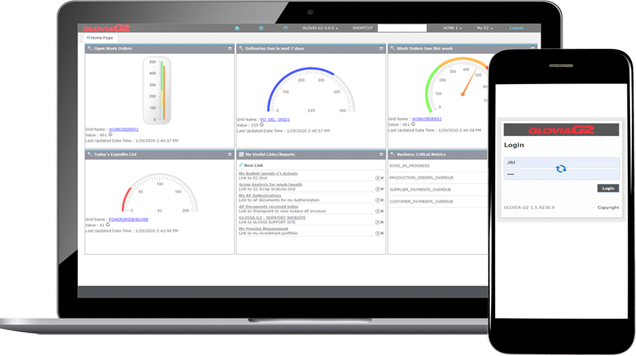Read the Original Article Here.
Article by Kristen Golembiewski
As manufacturers figure out how to meet ever-changing demands with an ever-shrinking workforce, automation is being hailed as an answer. And flexible manufacturing systems (FMS) can serve as a backbone for automation. An FMS enables quick changes in production and can run untended, helping shops maximize their output and time. And although a company looking to invest in a large FMS setup can easily expect to spend more than $1 million, the benefits are undeniable.
An FMS may include CNC machines, robots, material handling systems or palletizing systems and is controlled by ERP software. Smaller setups start under $500K, with a smaller, two-machine system from Fastems averaging $380K and reaching $1M or more depending on machine size and the size of the system as a whole.
“Your FMS could be very highly productive. In fact, it could be so productive that it can overwhelm the manufacturing operation,” said Walter Towner, assistant teaching professor at Worcester Polytechnic Institute’s Foisie School of Business and director of the WPI Center for Innovative Manufacturing Solutions.
He advises shops considering such a costly solution to consider their local and global efficiencies. On the local level, work to understand how the FMS will impact back-end operations like finishing and assembly, as well as other jobs. On the global level, consider the impact on competitiveness: For example, can the system produce parts while maintaining profitability and the quality customers expect?
Firms that do not understand their business model before adopting an FMS may fail, he cautioned. It makes sense for some shops. But the investment may do other shops in if demand changes.
“The question becomes, do we understand enough about our business to do the ROI calculation? That’s really the key,” he said. “Anybody can make a million of something. What’s hard is to make small groups of dissimilar parts where you won’t go broke doing it.”
There are many reasons to automate. Customers David Ward of Makino has met were looking to eliminate repetitive setups, work with decreasing lot sizes, reduce overall piece cost and do away with the inefficiencies of having to set up and tear down these operations hurting productivity.
The most common reason shops buy a Makino Machining Center (MMC) is to deal with the skills gap and shortage of skilled workers, which make it difficult to execute production during extended off-shifts and on weekends and holidays.
“Unfortunately, our industry is not making any more machinists,” Ward said. “It’s becoming a lost art.”
While some believe automation is about cutting labor costs, Ward sees firms struggling to grow despite a lack of qualified operators.
The constant drive toward greater efficiency complicates this situation. Because it is run by a computer and not a person, an FMS will force the operation to become more efficient, Ward said. It forces the globalization of all the data, forces tooling standards and programming methodologies and implements predictive maintenance.
Look at Costs Over Period of Time
However, the decision to implement an FMS can be difficult to justify. There’s a large upfront cost, for one—and it’s not just about the money. Makino spends about 100 hours per installed system training shops on their recently purchased MMCs.
Most of the training customers get revolves around the philosophy behind FMS, James Gorham of CrescentOne said. A typical question: How do you identify scrap and locate redundant inventory, even before it becomes redundant?
Down the road, tooling requirements will add costs and many firms can’t see beyond the fact that a single machine can be bought for far less than the initial FMS investment.
“Automation is the only way in which we can stay competitive in this global market, says Robert Humphreys of Fastems.
The idea is reflected in Fastems’ logo: a red dot with “8760” written on it. There are 8760 hours in a year, and the maker of automation systems wants customers to get the most out of each.
Some Fastems customers can achieve spindle productivity for more than 7000 hours per year—more than twice the 2000 hours per year that stand-alone machines typically run, Humphreys said. Because of this, an investment in FMS can be paid back faster than a comparable investment in a stand-alone machine, he said.
Returns Not Really Possible
“Buying a machine is low risk. It either does what it should or it doesn’t, and if it doesn’t, you send it back,” Gorham said. “But buying an ERP system is seen as a bit of a gamble; it isn’t that simple to send it back if it doesn’t work.”
CrescentOne offers GLOVIA G2 software, an ERP system that promises flexible production, high quality and low cost. Among the capabilities is the ability to predict how changing between jobs will affect overall shop productivity.
With GLOVIA G2 software, the user can test a potential order on the factory floor before committing—even months or quarters ahead. The FMS generates several scenarios, so a business can envision the impact on other orders and decide whether to take on the proposed job. Built on lean principles, the software can analyze both material and process quality.
With a simple user interface, the software can run on desktop and mobile devices. Color-coded, “traffic light” style alerts simplify the work process by providing end users with only the screens and data they need to complete their tasks.
Shops considering FMS need to have or develop long-term visions, Towner said. What will happen if a new machine needs to be added, or a new process must be integrated into the shop? It may be incredibly expensive or impossible, he said.
This article was first published in the Summer 2016 edition of Smart Manufacturing magazine.
With the name Fujitsu behind this product, GLOVIA G2 offers the best ERP solution for discrete manufacturers worldwide.


